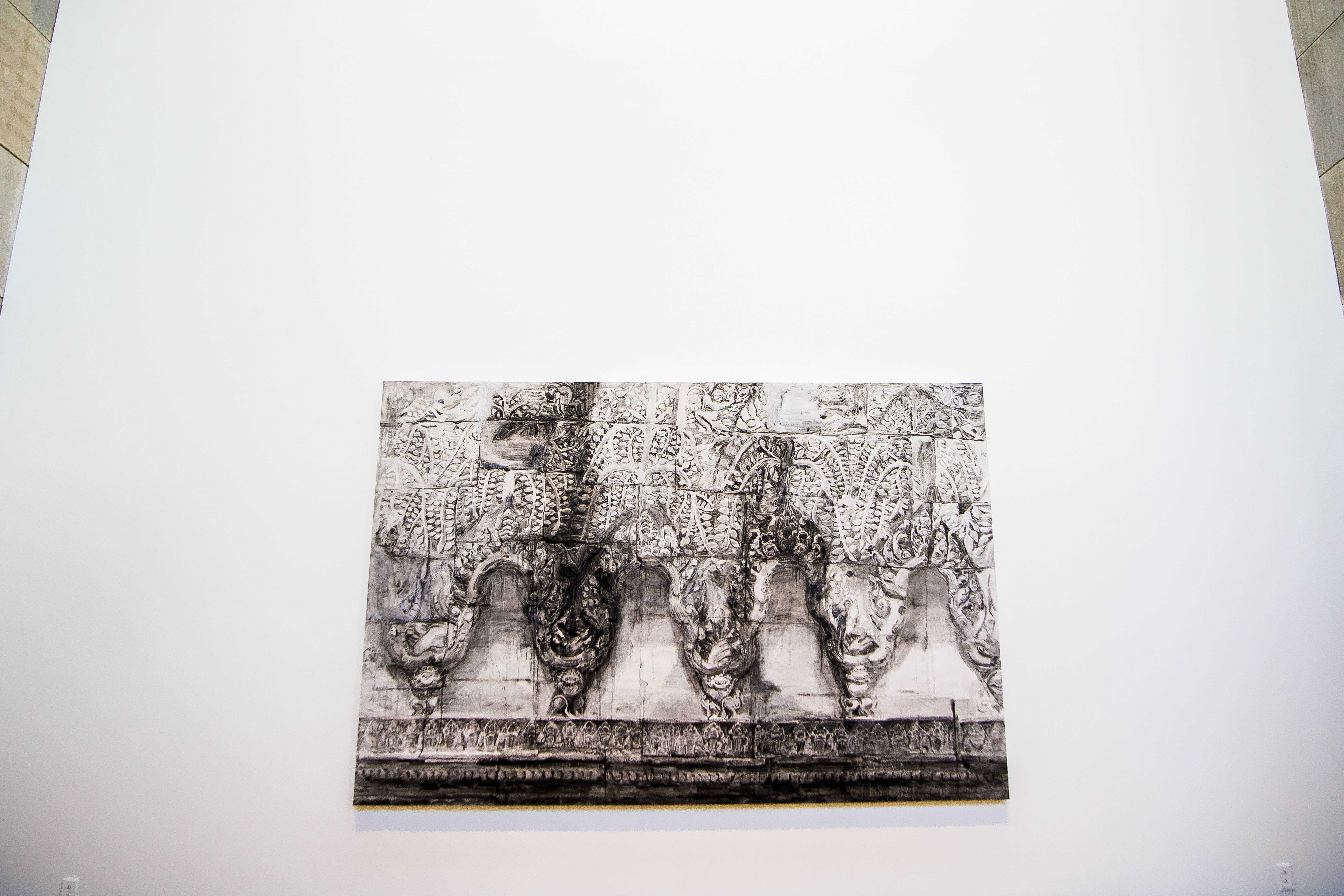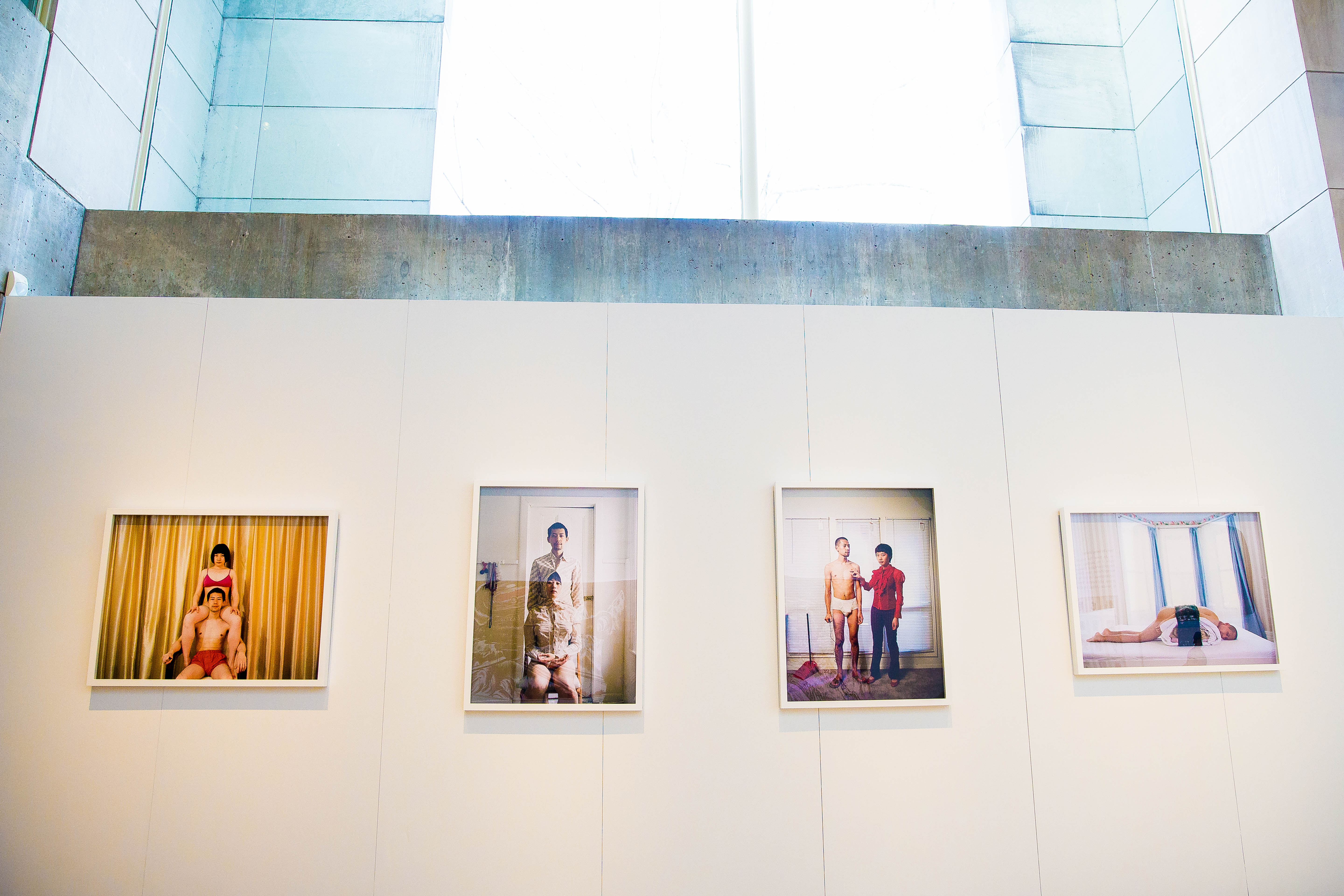We Chat: A Dialogue in Contemporary Chinese Art opened on Tuesday, Jan. 26 in Zilkha, and I highly recommend that everyone go see it before it closes on Feb. 28. The exhibition brings together ten contemporary Chinese artists, whose work is extremely wide-ranging in medium, style, and perspective on China. For example, Sun Xun painted animals as allegories of Chinese political leaders, while Bo Wang photographed his hometown, Chongqing, which has undergone radical urbanization in recent years. Perhaps the most unusual piece was that of Lu Yang, who created a video game called “Uterus Man” that comments on the idea of gender roles by featuring a male superhero with female reproductive organs that can be used as weapons.
This generation of contemporary artists grew up in a very different China than the artists who came before them. The earlier generation matured in a China separated from the rest of the world, where art-making was strictly state-controlled. The art created during that period usually appropriated the iconography of propaganda or was inspired by Imperial China. In striking contrast, the work created by these 10 contemporary artists is international in style and inspiration and significantly more diverse than that of their predecessors. Raised during Open Door Policy, they had access to far more information about global art movements than the previous generation had.
The title of the exhibition comes from a mobile messaging app developed in China called WeChat, which combines the functions of Facebook, Twitter, and Instagram in a country that does not allow those three apps. It connects 600 million users living in both China and abroad, and is thus symbolic of a new Chinese identity, one that is global and transcultural. WeChat appears in the exhibition’s title as “We Chat,” the space between the two words implying a conversation about Chinese identity and means of communication.
One of the most standout pieces in the show is Jan Shan’s “No Man City,” a 25-foot-long structure intended to represent China’s utopian future. The sculpture is a pristine white color, half of it composed of futuristic polygonal prisms and the other half drawing inspiration from traditional Chinese architecture. Shan projects onto the piece shadows of icons from classical Chinese painting, such as a crane, a sunrise, and a chrysanthemum, illustrating that the past still casts a long shadow on the present.
Other pieces, such as Liu Chuang’s “Love Story,” contain more elaborate backstories. Chuang collected romance novels found at a library frequented by migrant workers in Chenzhen. He realized that the readers often annotated the margins with inscriptions about their loneliness and their longings to return back home to their families. After color-coding these comments, Chuang had them translated into English and written on the walls of the gallery. The quotes are both beautiful and sad. One particularly wrenching verse goes: “Lovesick tears wet sleepless pillow/Loving affection tortures frustrated soul/People in love linger about streets of farewell/Yearning lovers experience the pain of separation.”
Another memorable piece is Pixy Yijun Liao’s “Experimental Relationship,” a series of self-portraits of Liao and her Japanese boyfriend that she began in 2007. It critiques heterosexual relationships and defies gender roles by reversing the power dynamics between a man and a woman. Liao’s photographs specifically address the expectation in China that women marry and have a child by the age of 30. Those who fail to do so are labeled “leftover women,” a derogative term used to describe single, educated women living in Chinese cities.
Of course, I could go on and on and on about all my favorite works. My own advice is to walk over to Zilkha and check out the art for yourself.
- Jonas Powell, Photo Editor
- Jonas Powell, Photo Editor


Comments are closed